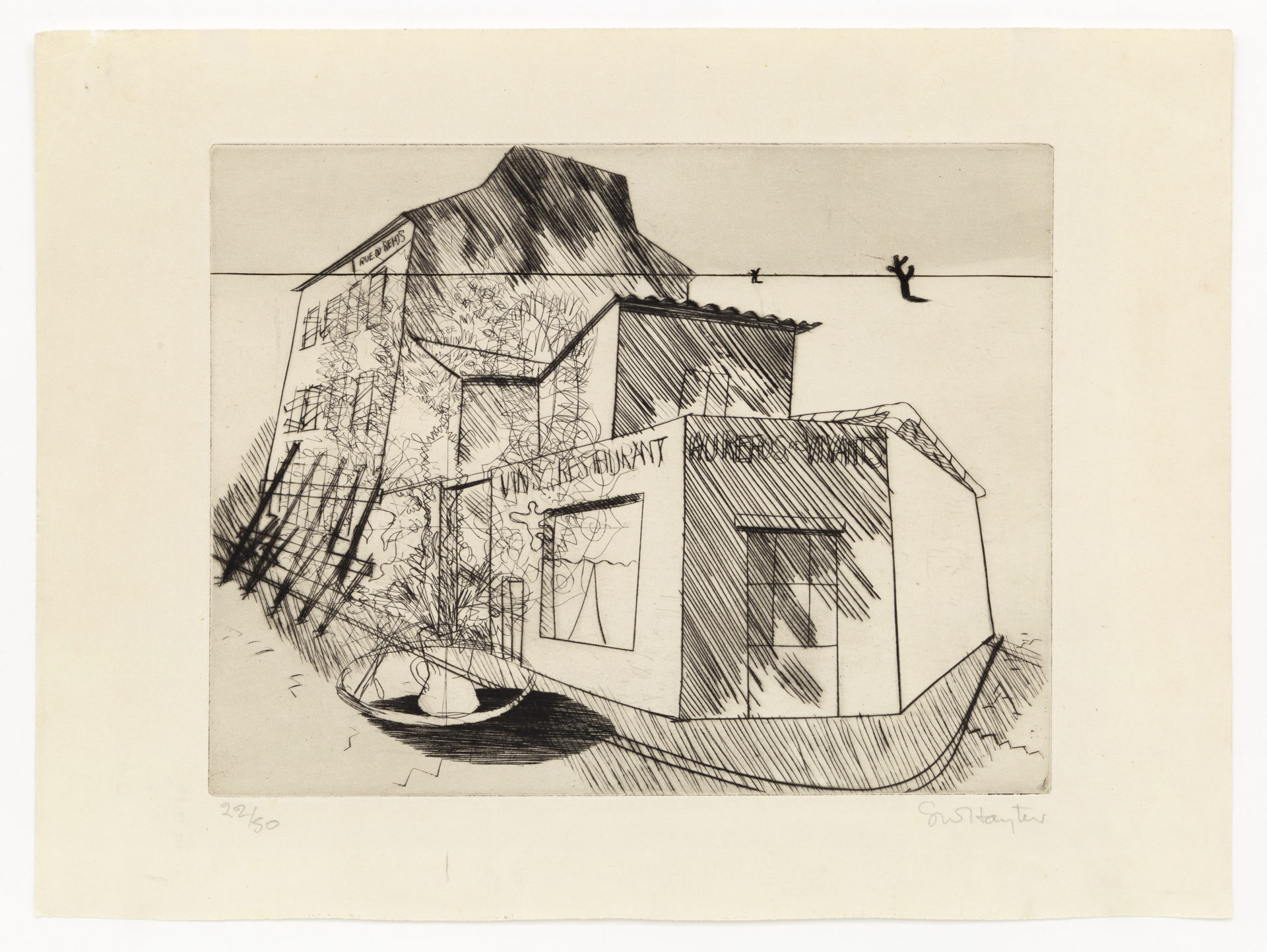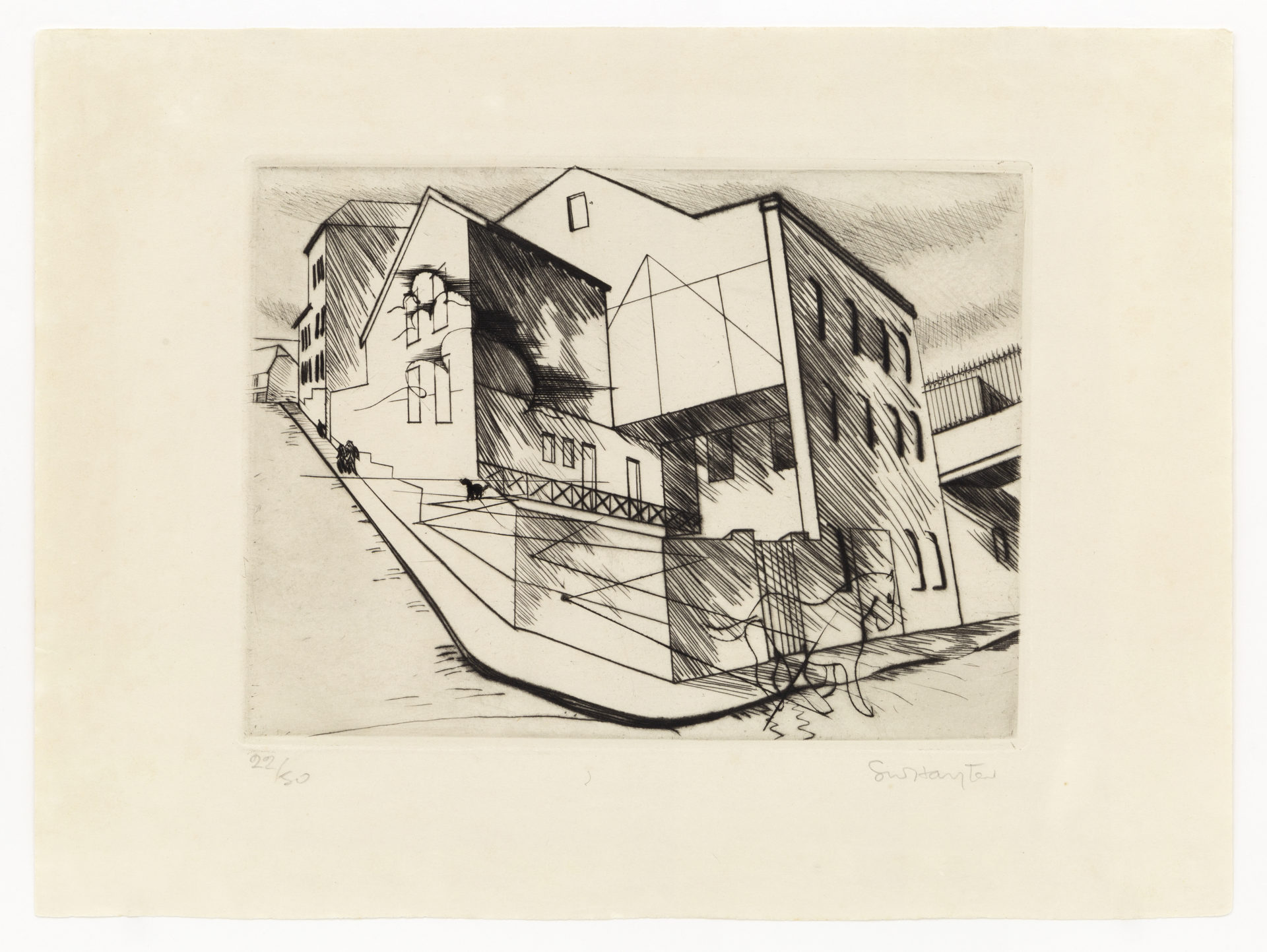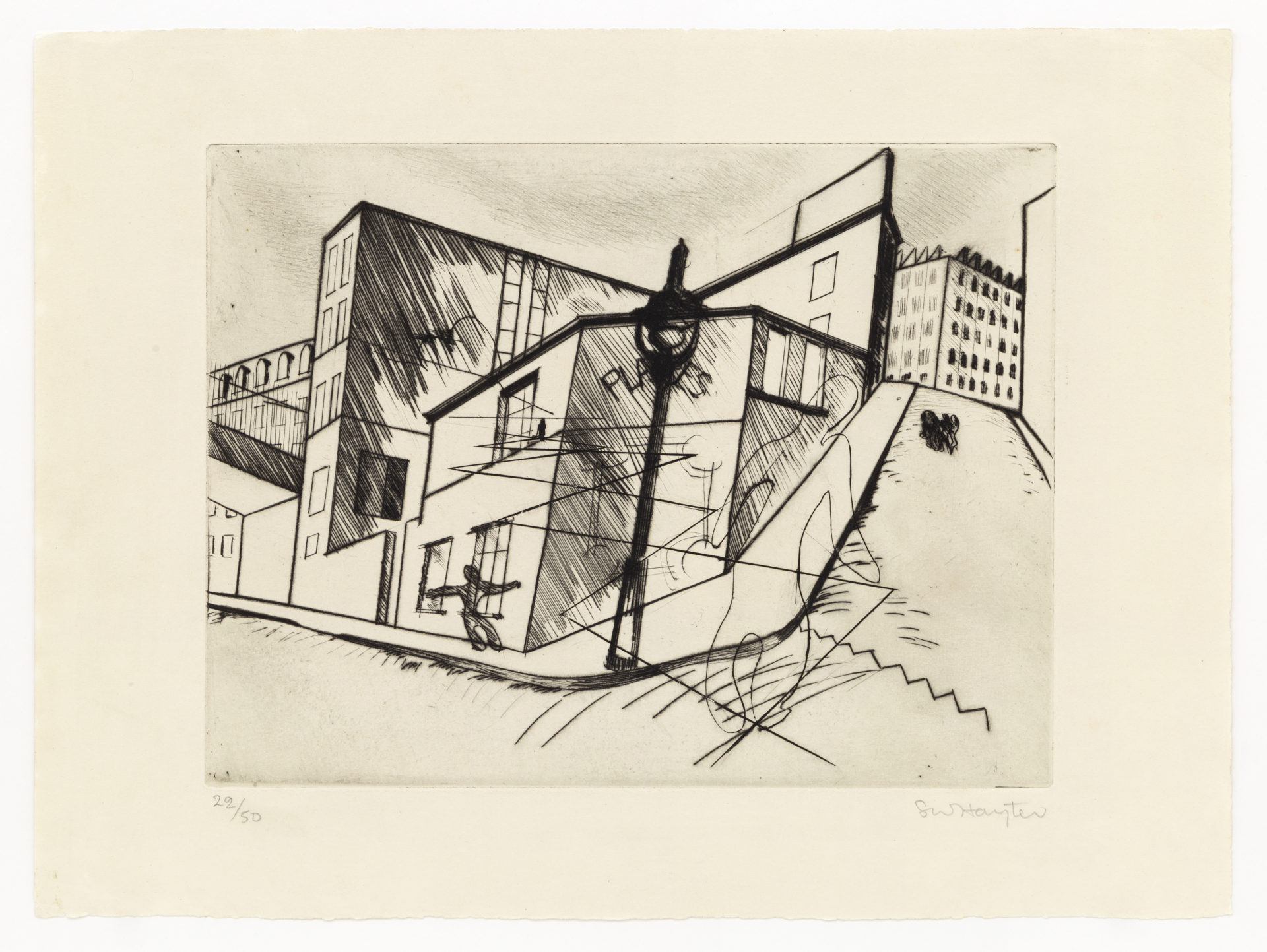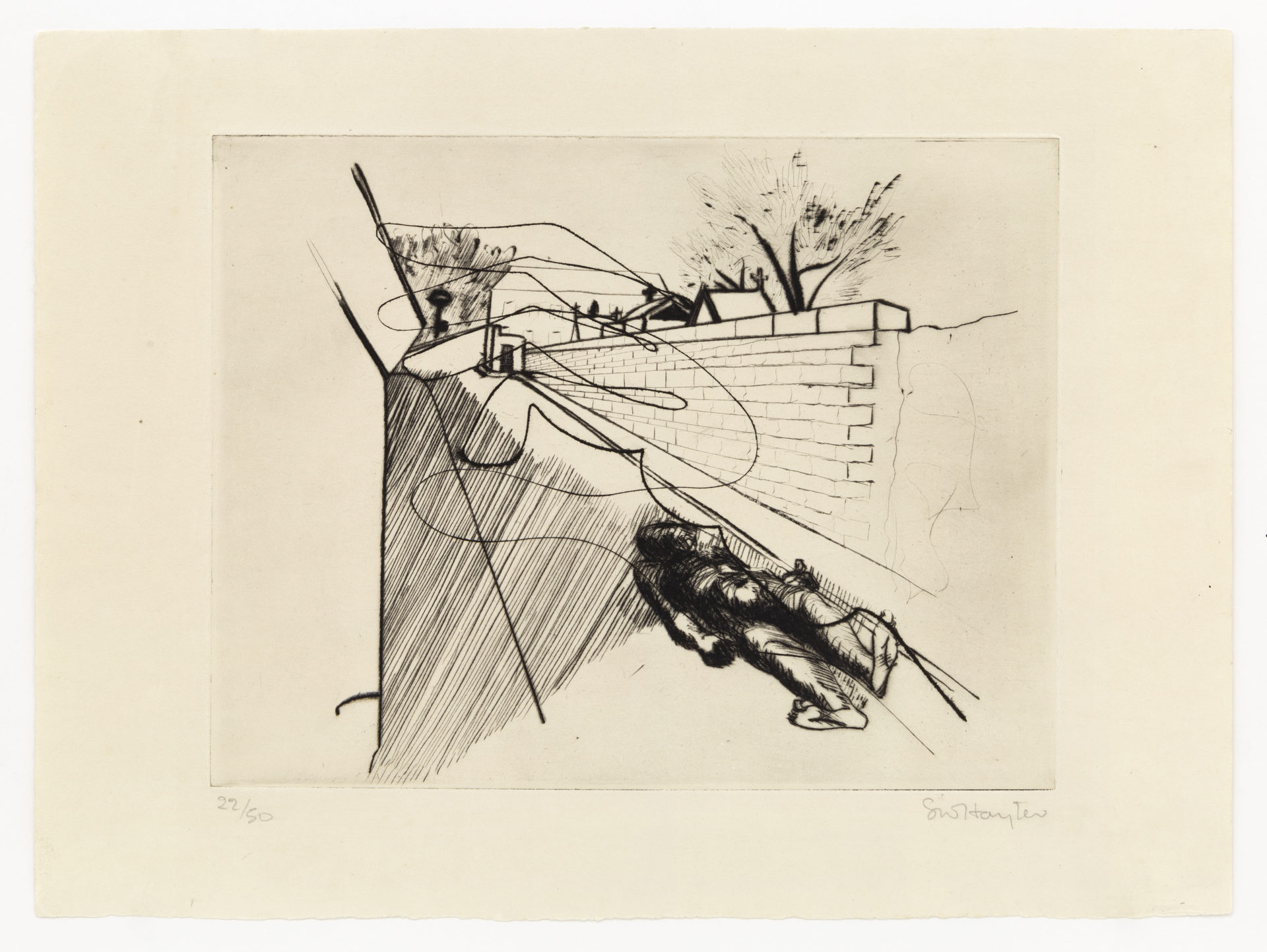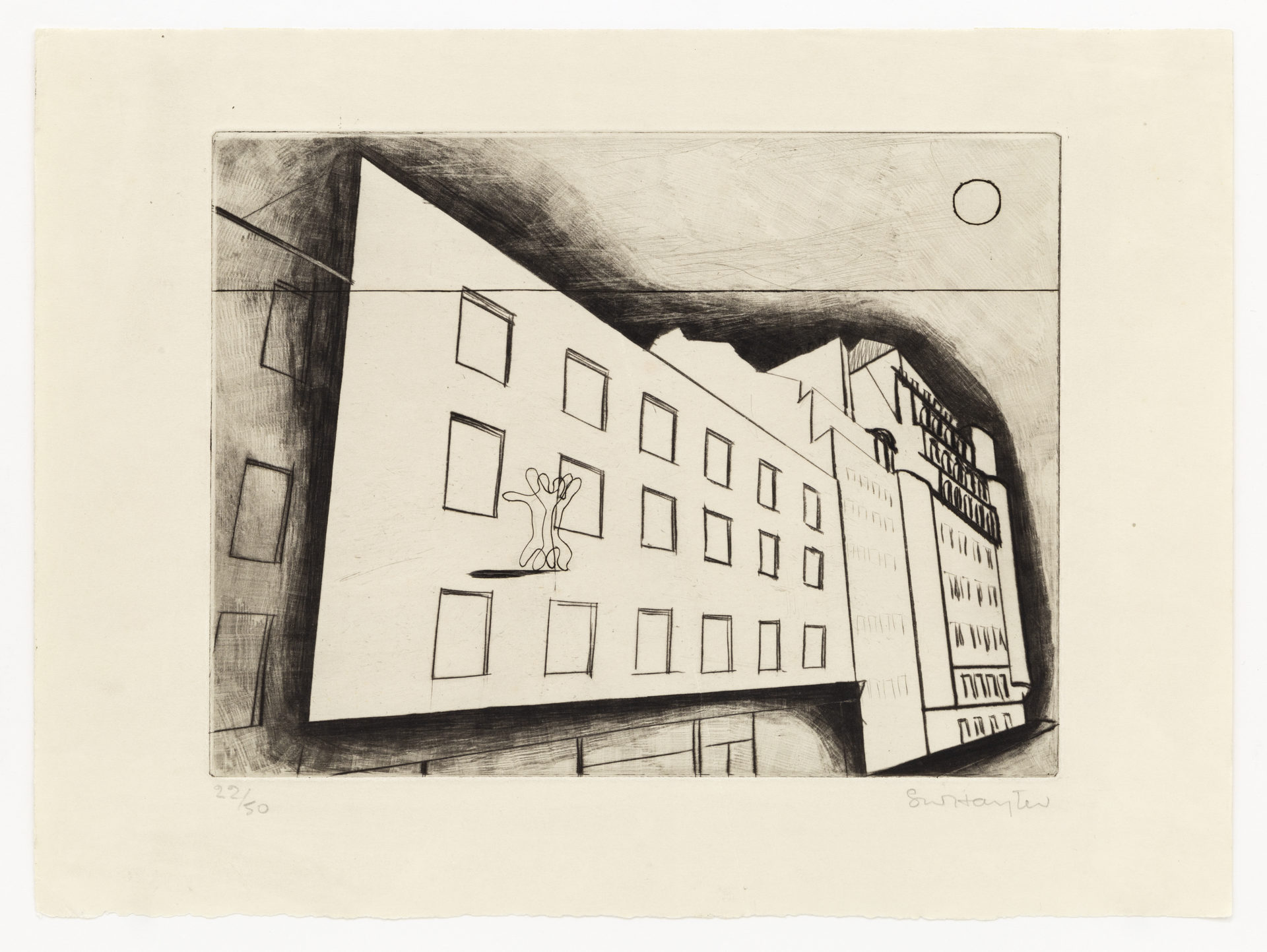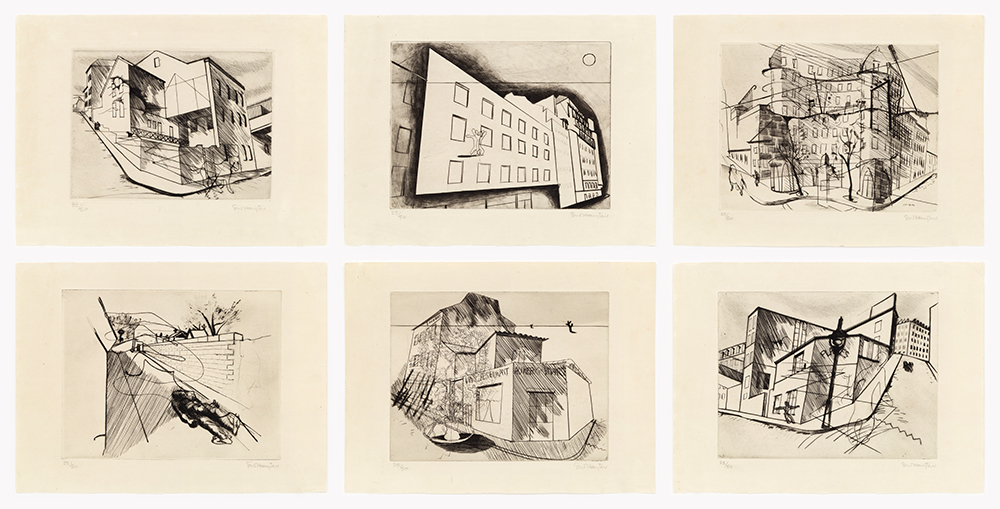
Paper: 11 x 15 inches (27.9 x 38.1 cm) each
Edition of 50
A master printmaker and founder of Atelier 17 — a landmark experimental workshop for the graphic arts — Stanley William
Hayter is famous for his tireless investigation of printmaking’s technical boundaries. The prints in his Paysages Urbains series (1930) were made in the original Atelier 17 studio, at 17 rue Campagne-Première in Montmartre. This set of prints serves as a reflection of Hayter’s joint interest in the “two elements in the making of a work of art—the unconscious element from which the inspiration comes, and the extremely rational control of the methods of execution,” he explained in 1948. This was his first portfolio.
Drawn to automist practice, Hayter superimposed drypoints of Parisian landscapes with engravings of an imagined landscape, thus creating a portfolio of six Surrealist scenes—amalgamations of reality and fiction reflecting Hayter’s unique perspective on the French capital. The artist’s choice in materials make the lines of the real landscapes—the ones based on existing Parisian streets—seem soft and ethereal, while the engraved lines of the imagined landscape, that Hayter invented, are depicted boldly, thus undermining the reality of the city. This unintuitive inversion of bold and soft, imagined and real, makes a point about the powerful cultural and subconscious assumptions associated with specific mark-making techniques.
Drawn to automist practice, Hayter superimposed drypoints of Parisian landscapes with engravings of an imagined landscape, thus creating a portfolio of six Surrealist scenes—amalgamations of reality and fiction reflecting Hayter’s unique perspective on the French capital. The artist’s choice in materials make the lines of the real landscapes—the ones based on existing Parisian streets—seem soft and ethereal, while the engraved lines of the imagined landscape, that Hayter invented, are depicted boldly, thus undermining the reality of the city. This unintuitive inversion of bold and soft, imagined and real, makes a point about the powerful cultural and subconscious assumptions associated with specific mark-making techniques.
Inquire
 Set of 6 drypoint and engravings
Set of 6 drypoint and engravingsPaper: 11 x 15 inches (27.9 x 38.1 cm) each
Edition of 50
Paper: 11 x 15 inches (27.9 x 38.1 cm) each
Edition of 50
